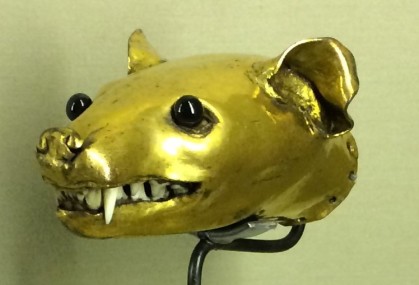
A selfie with the open-top of the dome over the German Bundestag in Berlin. If you’re going to Berlin, don’t miss it. Also, make reservations, they and the visit are free.
Phone and Tablet dependence
First, I need to admit that I am dependent on my phone and tablet. They let me be a cyborg in terms of finding important information, taking pictures, communicating, and keeping up with useless trivia. On the more serious side, my only camera is my phone’s camera, so I really do need it charged and ready to go in the morning.
The extension cord
I now travel with a 10-foot extension cord with three outlets on the end. Why? It all started in Europe when I had three of my five Euro plug adapters fail, break, or get lost. I was on the verge of not being able to charge my devices! I made it through the trip but needed a better solution than taking 30 plug adapters every trip.
Somewhere I read of someone who used one plug adapter to plug in the extension cord, which then allowed multiple devices to connect with their standard US-style plugs. The charging devices do not draw very much electricity. An adapter draws .3-.5 amp each (as a comparison one 100-watt bulb draws .9 amps), so it is safe to connect two or three to one cord. The length also gives me flexibility to have the device where I want regardless of where the outlet is located.
Now I carry one everywhere I travel, even in the US, just for the flexibility. Definitely consider one for your trips to areas with different plugs. I still carry five plug adapters and three chargers, just in case.
The compact phone battery pack
I was in a seminar (on life insurance!) at work and won a battery pack. Embarrassingly enough, I didn’t know what it was at first, as it was a promo item and didn’t come with instructions. Once I figured it out, it is great. It’s about 2.25”x 3.25” x 3/8” and weighs maybe an ounce. It has a built-in cord and connector for a non-iPhone and, even better for me, an adapter for that cord to charge an iPhone.
The fully charged battery pack will fully recharge my iPhone once in about an hour. That’s important, because a morning of taking pictures in a museum can drain my battery. I can charge it in my pocket, or hold the battery and phone together if needed – it’s that compact and light.
You can see one like it on Amazon here.
The Chip with PIN Card
All credit cards now have chips, so they are much more secure when using the card payment devices. Most US-based cards are chip and signature, which works fairly well in Europe, but far from perfectly. Most of the time when I charge something, the person helping us hands over a bill to sign and we’re on our way. We’re also likely among the few in the store that don’t use a PIN. Full disclosure – I was likely using a card with a 1.5% rebate to get the rebate rather than paying cash.
We pretty exclusively use public transportation when traveling and I have found that automated ticket terminals almost exclusively require a chip and PIN card. I have also been in a very few stores that only support chip and PIN. I have one card with a PIN that I use for these and it’s worked great. If I could find another with no-fee, I might get one as a backup.
Would you like to pay in dollars?
It’s fairly easy for European waiters/waitresses to identify US tourists. You might find that they kindly offer to let you charge your food bill in dollars, which makes it easy to instantly know your cost as opposed to multiplying Euros by 1.1247 in your head (or on the calculator on your phone).
Don’t take advantage of their offer. If you do, you’ll get their credit card processor’s exchange rate (and they will get a cut) which will be much less advantageous then your credit card company’s rate.
Share, please.
Please share your travel tips in the comments!
Actions you can take include:
If you have not seen the “Why you should read this blog…WIIFY” post, it’s here.
Questions, comments, or suggestions for retirement surprise areas you want to know more about?
-Leave a comment
-Use ‘Contact’, above, to send an email.












